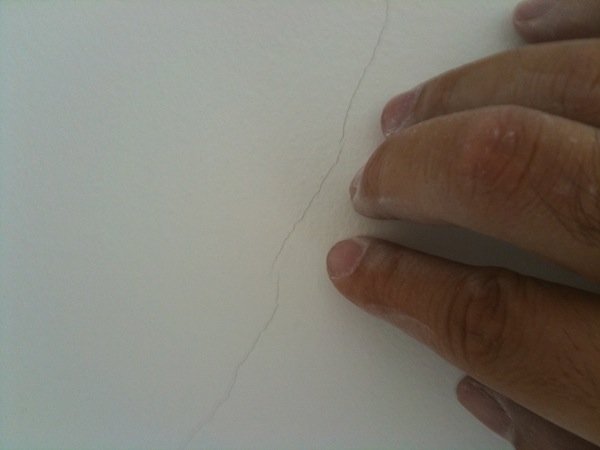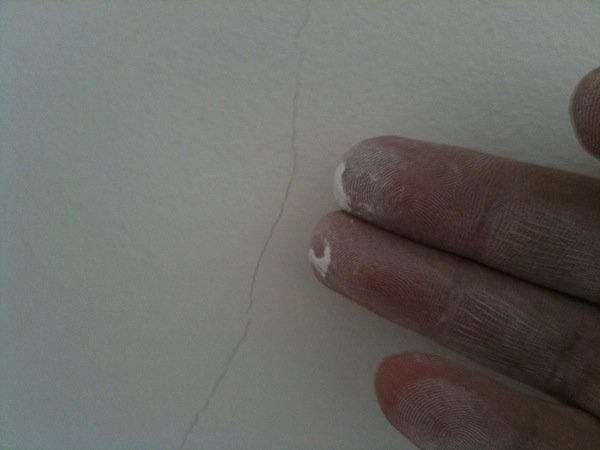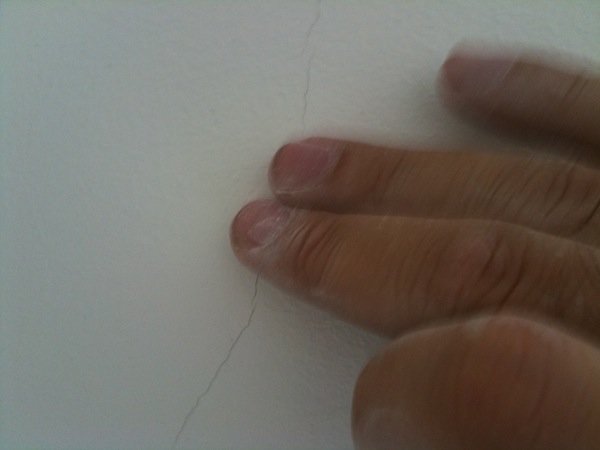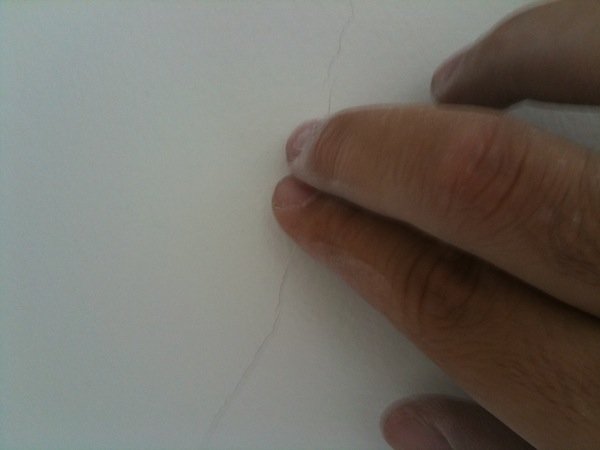Surface cracks on walls are a common sight, even with new houses and buildings. Sometimes it is caused by lower quality workmanship and materials, but often it could be due to shrinkage and slight land movement.
I encountered this at a condominium property recently and needed a quick and simple fix. They say lazy people always come up with the simplest and shortest way to a solution, and being a darn lazy bloke, I guess my laziness came up with this quick simple minor wall crack repair. Honestly, it’s more a cosmetic fix than a repair.
IMPORTANT: This fix only applies to white walls, and should only be performed on tiny surface cracks. Structural cracks WILL require serious attention and rectification using proper measures by professional means!
Wall Crack Repair – Not All Cracks Require Patching with Plaster

Most people think a crack requires patching. However, patching isn’t an accurate term to use here. Gap filling is more like it.
And why white walls only? Because we are using talcum powder! Baby talcum powder is smooth and fine enough to fill into tiny surface cracks effectively, and if a little moisture or diluted dry-clear glue is used, you could create enough adhesion to keep the powder in the crack to remain more permanently. That is the reason we are working with cracks only on white walls. If you could get your hands on some green talcum powder, you could fix up a green wall, but let’s focus on white walls for now.





For those in a situation where your property is up for viewing by potential buyers or tenants, this could be a convenient solution for a quick cosmetic fix for walls, floors and ceilings!
You may want to try adding a little water for adhesion; do experiment with that and see if it works. Do note that this quick fix is only a cosmetic one, and may not be permanent enough to be considered as a proper fix. This is to be used if you really want to quickly cover up surface cracks. Whatever the reason may be.
It is also applicable for extremely small hairline cracks about 0.1mm and up to 0.5mm in width. Cracks wider than that up to 3mm, or larger holes which are not structurally compromising, are best rectified with a commercially-available crack filler and cellulose filler. Much wider cracks will require professional assessment and repair work. See the next section on BRE Guidelines.
BRE Guidelines
The UK-based Building Research Establishment Ltd (BRE) published a guideline on cracks and treatment methods on their website, which I will replicate here for information:
Six categories of crack were identified, which linked the width and number of cracks to the type of repair that was appropriate.
Damage categories with descriptions of typical damage. Ease of repair in italics.
0 – Hairline cracks of less than about 0.1 mm which are classed as negligible. No action required.
1 – Fine cracks that can be treated easily using normal decoration. Damage generally restricted to internal wall finishes; cracks rarely visible in external brickwork. Typical crack widths up to 1 mm.
2 – Cracks easily filled. Recurrent cracks can be masked by suitable linings. Cracks not necessarily visible externally; some external repointing may be required to ensure weather-tightness. Doors and windows may stick slightly and require easing and adjusting. Typical crack widths up to 5 mm.
3 – Cracks that require some opening up and can be patched by a mason. Repointing of external brickwork and possibly a small amount of brickwork to be replaced. Doors and windows sticking. Service pipes may fracture. Weather-tightness often impaired. Typical crack widths are 5 to 15 mm, or several of, say, 3 mm.
4 – Extensive damage which requires breaking-out and replacing sections of walls, especially over doors and windows. Windows and door frames distorted, floor sloping noticeably. Walls leaning or bulging noticeably, some loss of bearing in beams. Service pipes disrupted. Typical crack widths are 15 to 25 mm, but also depends on number of cracks.
5 – Structural damage that requires a major repair job, involving partial or complete rebuilding. Beams lose bearing, walls lean badly and require shoring. Windows broken with distortion. Danger of instability. Typical crack widths are greater than 25 mm, but depends on number of cracks.
In general, categories 0, 1 and 2 with crack widths up to 5 mm can be regarded as ‘aesthetic’ issues that require only redecoration. Categories 3 and 4 can generally be regarded as ‘serviceability’ issues, that is, they affect the weathertightness of the building and the operation of doors and windows. Category 5 presents ‘stability’ issues and is likely to require structural intervention.
BRE Digest 251, and in particular the table above, is now used widely in the industry as a way of categorising cracks and determining whether any intervention is necessary.
Disclaimer
The method presented above for wall crack repair applies only to surface hairline cracks on plastered brick wall, concrete wall or drywall. If you are faced with a structural crack, you should get that wall checked and verified by a professional, and rectify it using suitable reinforcement by professional means.
